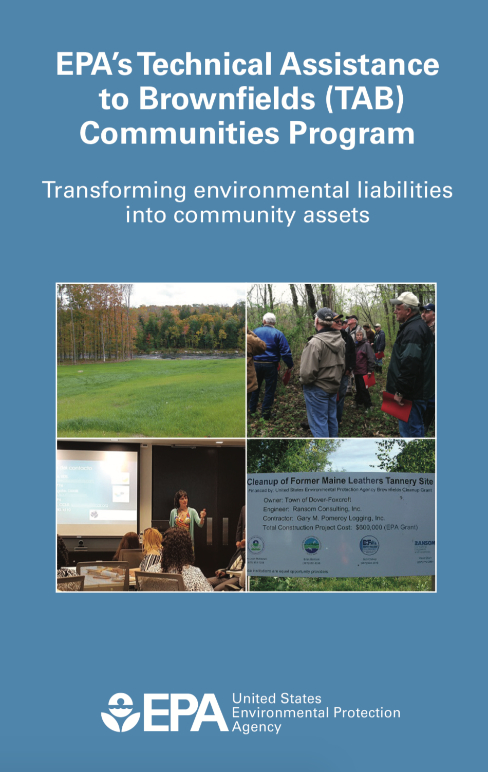What are Brownfields sites?
Brownfields sites are properties that have been identified as having the presence or potential presence of a hazardous substance, pollutant, or contaminant that is complicating its use and has the potential to be cleaned up and safely reused in ways that meet community needs. Cleaning up and reinvesting in these properties reduces contaminant threats to public health and the environment, reduces blight, and takes development pressure off green spaces and working lands.
The Overview of EPA’s Brownfields Program webpage states that it is estimated that there are more than 450,000 brownfields in the U.S. and cleaning up and reinvesting in these properties increases local tax bases, facilitates job growth, utilizes existing infrastructure, takes development pressures off of undeveloped, open land, and both improves and protects the environment.
Tribal and state response programs oversee assessment and cleanup activities at the majority of brownfields sites across the country. The depth and breadth of Tribal response programs vary. Some focus on Comprehensive Environmental Response, Compensation, and Liability Act (CERCLA) related activities, while others are multifaceted, addressing sites regulated by both CERCLA and the Resource Conservation and Recovery Act (RCRA).
Technical Assistance to Brownfields Communities (TAB)
The Technical Assistance to Brownfields (TAB) Communities Program helps Tribes and other stakeholders understand risks associated with contaminated or potentially contaminated propoerties. TAB grant recipients (also known as TAB providers) can increase Tribes’ understanding and involvement in brownfields cleanup by working with them to assess, safely clean up, revitalize, and sustainably reuse sites. The TAB Program is funded by EPA and available to all stakeholders.
TAB providers help Tribes:
- Identify, inventory and prioritize brownfields for redevelopment.
- Establish reuse goals.
- Determine the potential public health impact of brownfields.
- Get the public and other stakeholders involved.
- Facilitate site reuse goal-setting and planning charrettes.
- Evaluate economic feasibility of reuse plans.
- Conduct educational workshops, seminars and webinars.
- Use Web-based tools to facilitate brownfields redevelopment.
- Interpret technical brownfield reports, assessments and plans.
- Identify appropriate funding/financing approaches.
- Integrate approaches to brownfield cleanup and redevelopment.
- Understand and navigate regulatory requirements.
- Apply for and manage EPA brownfields grants.
- Develop work plans.
- Hire planning and environmental contractors and consultants.
Center for Creative Land Recycling: About Us
New Jersey Institute of Technology: What is TAB?
TAB Providers
EPA has awarded TAB Grants which provide technical support to brownfield sites in multiple EPA regions as listed below. See EPA’s Brownfields Technical Assistance and Research webpage for current awardees, including a map.
- EPA Region 1: The University of Connecticut
- EPA Region 2: New Jersey Institute of Technology (NJIT)
- EPA Region 3: The West Virginia University Research Corporation,
- EPA Region 4: The International City/County Management Association
- EPA Regions 5, 6, 7, 8 and nationwide: Kansas State University (KSU)
- EPA Regions 9 and 10: Center for Creative Land Recycling (CCLR)

